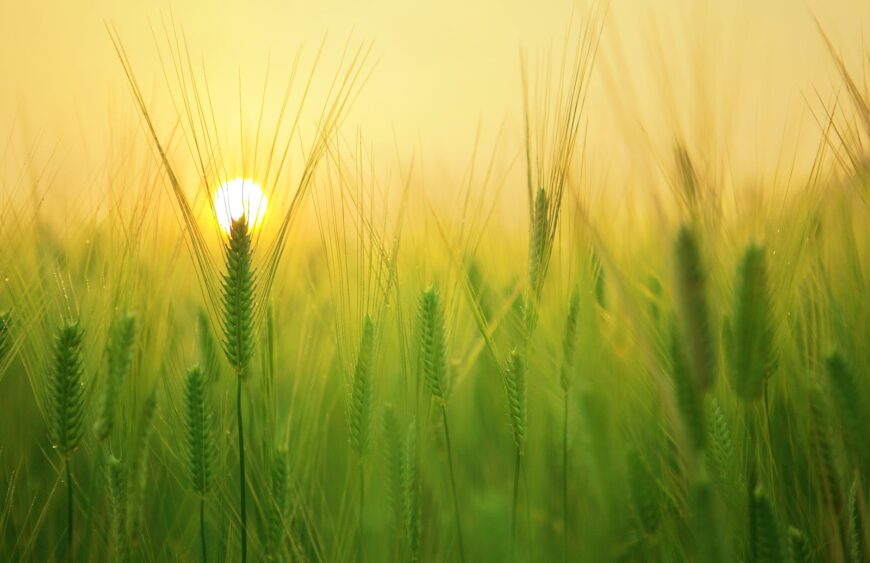Ingredients of Whisky
Whisky production is an art that marries tradition, craftsmanship, and nature. At the heart of every bottle lies a careful selection of ingredients that not only define the spirit’s character but also influence its quality, flavor, and identity. This article explores the essential ingredients required to produce whisky, emphasizing the importance of quality, sourcing, local produce, and other critical factors that contribute to crafting exceptional whisky.
1. Water: The Lifeblood of Whisky
Water is arguably the most critical ingredient in whisky production, playing a role in every stage of the process—from mashing the grains to diluting the spirit before bottling. The quality of water used can significantly influence the final product, which is why distilleries often source water from local, pristine springs or rivers.
Quality and Sourcing
- Purity: Water used in whisky production must be free from contaminants and rich in minerals. Impurities can affect the fermentation process and introduce unwanted flavors.
- Local Sourcing: Many distilleries pride themselves on using water from nearby sources, which can impart unique characteristics to the whisky. For example, distilleries in Scotland’s Speyside region often use soft, mineral-rich water from the River Spey.
- Volume: Producing whisky requires large volumes of water. For every liter of whisky produced, distilleries might use up to 50 liters of water throughout the process.
2. Barley: The Heart of Single Malt Whisky
Barley is the primary grain used in single malt whisky, particularly in Scotland. The quality and variety of barley can profoundly influence the flavor profile of the whisky, making it a cornerstone of production.
Quality and Sourcing
- Varieties: Different barley varieties, such as Optic or Concerto, are chosen based on their yield, starch content, and how well they malt. Each variety can bring subtle differences to the whisky’s flavor.
- Local Produce: Many distilleries source barley locally to support regional agriculture and ensure freshness. For instance, distilleries in Scotland’s Orkney Islands often use locally grown barley, which can add unique maritime notes to the whisky.
- Malting: The malting process converts the starches in barley into fermentable sugars. The degree of malting and whether the barley is peated or unpeated are crucial factors. Peated barley, dried over peat fires, imparts a smoky flavor, common in Islay whiskies.
3. Yeast: The Engine of Fermentation
Yeast is a living organism responsible for fermenting the sugars in the mash to produce alcohol. The type and quality of yeast can significantly affect the whisky's flavor and character.
Quality and Sourcing
- Strains: Distilleries often use specific strains of yeast that have been cultivated for their ability to produce consistent and desirable flavors. Some distilleries even use proprietary yeast strains, kept as a closely guarded secret.
- Fermentation Time: The length of fermentation can range from 48 to 72 hours, with longer fermentations often leading to more complex and fruity flavors.
- Temperature Control: Maintaining the correct temperature during fermentation is crucial to avoid off-flavors and ensure that the yeast performs optimally.
4. Grain: The Backbone of Grain Whisky and Blends
While barley is used exclusively in single malt whisky, other grains such as corn, wheat, and rye are used in grain whisky production. These grains contribute different flavors and are essential in blended whiskies.
Quality and Sourcing
- Corn: Predominantly used in American bourbon production, corn must be of high quality and typically comprises at least 51% of the mash bill by law. It imparts sweetness and a rich, full-bodied flavor.
- Rye: Known for its spicy and peppery notes, rye is used in both American rye whiskey and some Scotch blends. The quality of rye can influence the intensity of these flavors.
- Sustainability: Increasingly, distilleries are focusing on sustainably sourced grains, supporting local farmers who practice environmentally friendly agriculture. This trend is part of a broader move towards sustainable whisky production.
5. Peat: The Source of Smokiness
Peat is decomposed organic material found in bogs, used in some whisky production to dry malted barley. When burned, it releases a distinct smoke that infuses the barley with a characteristic smoky flavor, especially prominent in Islay whiskies.
Quality and Sourcing
- Peat Composition: The composition of peat can vary depending on its location, affecting the intensity and type of smokiness imparted to the whisky. Islay peat, for example, is rich in seaweed and has a more maritime character.
- Peating Levels: The level of peat smoke exposure, measured in phenol parts per million (PPM), can range from light (around 5 PPM) to heavily peated whiskies (over 50 PPM). For example, Ardbeg whisky is known for its high PPM levels, often exceeding 50 PPM, giving it an intense smokiness.
6. Wood: The Vessel for Maturation
The wood used in whisky barrels is one of the most influential factors in determining the flavor of the final product. Whisky is typically aged in oak barrels, which can impart a range of flavors, from vanilla and caramel to spice and fruit.
Quality and Sourcing
- Oak Type: The majority of whisky barrels are made from American white oak (Quercus alba), known for its durability and ability to impart sweet, vanilla-like flavors. European oak (Quercus robur) is also used, particularly for sherry casks, contributing richer, spicier notes.
- Barrel History: The previous contents of the barrel play a significant role in flavor development. For example, barrels that once held bourbon add sweetness, while sherry casks contribute rich, fruity notes.
- Aging Time: Whisky must be aged for at least three years by law, but many are matured for much longer. The aging process allows the spirit to interact with the wood, absorbing complex flavors and aromas. Over 60% of a whisky’s flavor can be attributed to the barrel in which it is aged.
7. Air: The Element of Terroir
While not an "ingredient" in the traditional sense, the air in and around a distillery plays a crucial role in the maturation process, contributing to the whisky’s unique terroir.
Quality and Sourcing
- Climate: The local climate affects how whisky ages. In cooler climates like Scotland, whisky matures slowly, allowing for a more gradual development of flavors. Warmer climates, such as those in the southern United States, accelerate the aging process, leading to quicker maturation but often more intense flavors.
- Location: Coastal distilleries may produce whiskies with subtle maritime notes due to the influence of sea air, while inland distilleries might yield a different flavor profile, influenced by the surrounding vegetation and microclimate.
8. Time: The Invisible Ingredient
Time is an essential, though often overlooked, "ingredient" in whisky production. The length of time a whisky spends maturing in barrels determines its final character, with older whiskies often (but not always) being more complex and refined.
Quality and Sourcing
- Aging Duration: While whisky must be aged for at least three years to be legally considered whisky, many premium whiskies are aged for much longer, sometimes up to 30 years or more. The aging process allows for the development of deep, nuanced flavors.
- Patience and Expertise: Master distillers and blenders must carefully monitor the aging process, knowing when a whisky has reached its peak maturity. Bottling too early can result in a spirit that lacks depth, while over-aging can lead to an overly woody or bitter taste.
The Role of Quality and Local Produce in Whisky Production
The emphasis on quality and local sourcing in whisky production is more than a marketing strategy; it’s a commitment to preserving tradition and ensuring the authenticity of the product.
- Support for Local Agriculture: Many distilleries prioritize sourcing ingredients from local farmers, which supports regional economies and ensures a fresh supply of raw materials. For instance, distilleries in Scotland’s Highlands often use locally grown barley, which is well-suited to the region’s climate and soil conditions.
- Environmental Sustainability: Increasingly, distilleries are adopting sustainable practices in their sourcing of ingredients. This includes using organic barley, minimizing water usage, and implementing waste reduction strategies. For example, Bruichladdich on Islay uses 100% Scottish barley, much of it organic, and has a strong commitment to sustainability.
- Traceability and Transparency: Consumers are increasingly interested in the provenance of their whisky. Distilleries that are transparent about where they source their ingredients and how they produce their whisky are often more trusted and respected. This transparency extends to detailed labeling, where some distilleries include information about the specific farms where their barley was grown or the exact origin of their water.
Conclusion
The ingredients required to produce whisky—water, barley, yeast, grain, peat, wood, air, and time—each play a vital role in shaping the final product. The emphasis on quality, local sourcing, and sustainable practices ensures that whisky not only maintains its traditional roots but also meets the expectations of modern consumers. By understanding the importance of these ingredients, whisky enthusiasts can better appreciate the craftsmanship that goes into every bottle, knowing that behind each sip lies a story of dedication, heritage, and the natural beauty of the land from which it comes.
Whisky is more than just a spirit; it is a testament to the harmonious relationship between nature and human ingenuity, with each ingredient contributing to its rich tapestry of flavors and aromas. Whether enjoyed neat, on the rocks, or in a cocktail, the depth of whisky's character is a direct reflection of the quality and care invested in its creation.

